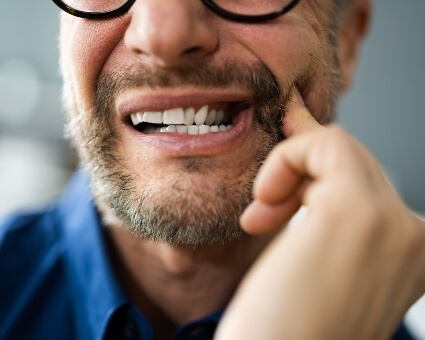
Emergency Dentistry in Hurstville
Any injury to the teeth or gums can be potentially serious and should not be ignored. Ignoring a dental problem can increase the risk of permanent damage as well as the need for more extensive and expensive treatment down the road.
At GC Dental, our team is well equipped with qualified dentists for emergencies.
Here’s a quick summary of what to do for some common dental problems:
- Toothaches – First, thoroughly rinse your mouth with warm water. Use dental floss to remove any lodged food. If your mouth is swollen, apply a cold compress to the outside of your mouth or cheek. Never put aspirin or any other painkiller against the gums near the aching tooth because it may burn the gum tissue. See your dentist as soon as possible.
- Chipped or broken teeth – Save any pieces. Rinse the mouth using warm water; rinse any broken pieces. If there’s bleeding, apply a piece of gauze to the area for about 10 minutes or until the bleeding stops. Apply a cold compress to the outside of the mouth, cheek, or lip near the broken/chipped tooth to keep any swelling down and relieve pain. See your dentist as soon as possible.
- Knocked-out tooth – Retrieve the tooth, hold it by the crown (the part that is usually exposed in the mouth), and rinse off the tooth root with water if it’s dirty. Do not scrub it or remove any attached tissue fragments. If possible, try to put the tooth back in place. Make sure it’s facing the right way. Never force it into the socket. If it’s not possible to reinsert the tooth, put it in a small container of milk (or a cup of water with a pinch of salt, if milk is unavailable) or a product containing cell growth medium, such as Save-a-Tooth. See your dentist as soon as possible. Teeth returned to their socket within 1 hour have the best chance of being saved.
- Extruded (partially dislodged) tooth – See your dentist right away. Until then, to relieve pain, apply a cold compress to the outside of the mouth or cheek in the affected area. Take an over-the-counter pain reliever (such as Tylenol or Advil) if needed.
- Objects caught between teeth – First, try using dental floss to very gently and carefully remove the object. If you can’t remove it, see your dentist. Never use a pin or sharp object to poke at it, as these can cut your gums or scratch your teeth.
- Lost filling – As a temporary measure, stick a piece of sugarless gum into the cavity (sugar-filled gum will cause pain) or use an over-the-counter dental cement. See your dentist as soon as possible.
- Lost crown – If the crown falls off, make an appointment to see your dentist as soon as possible and bring the crown with you. If the tooth is causing pain and you can’t get to the dentist right away, use a cotton swab to apply clove oil to the sensitive area. If possible, slip the crown back over the tooth after coating the inner surface with dental cement, toothpaste, or denture adhesive. Do not use super glue!
- Broken braces wires – If a wire breaks or sticks out, try using the eraser end of a pencil to push the wire into a more comfortable position. If that doesn’t work, cover the end with orthodontic wax, cotton, or gauze until you can see your orthodontist. Never cut the wire, as you might swallow or inhale it.
- Loose brackets and bands – Temporarily reattach loose braces with orthodontic wax or place wax over them for cushioning. Save loose bands and call your orthodontist for re-cementing or replacement.
- Abscess – Abscesses are serious infections that can damage surrounding tissue and spread if untreated. If you notice a painful, pimple-like swelling on your gum, see your dentist immediately. In the meantime, rinse your mouth with a mild saltwater solution several times a day to ease the pain and draw out the pus.
- Soft-tissue injuries – Injuries to the tongue, cheeks, gums, or lips can cause bleeding. To manage this:
- Rinse your mouth with a mild saltwater solution.
- Apply pressure to the bleeding site using moistened gauze or a tea bag for 15-20 minutes.
- Use a cold compress on the outside of your mouth or cheek for 5-10 minutes to control bleeding and relieve pain.
- If bleeding doesn’t stop, see your dentist or visit the hospital emergency room immediately while continuing to apply pressure to the site.
Schedule Your Visit
If you have a dental emergency, please contact us today and our professional and qualified dentists will take care of you.
CONTACT US

